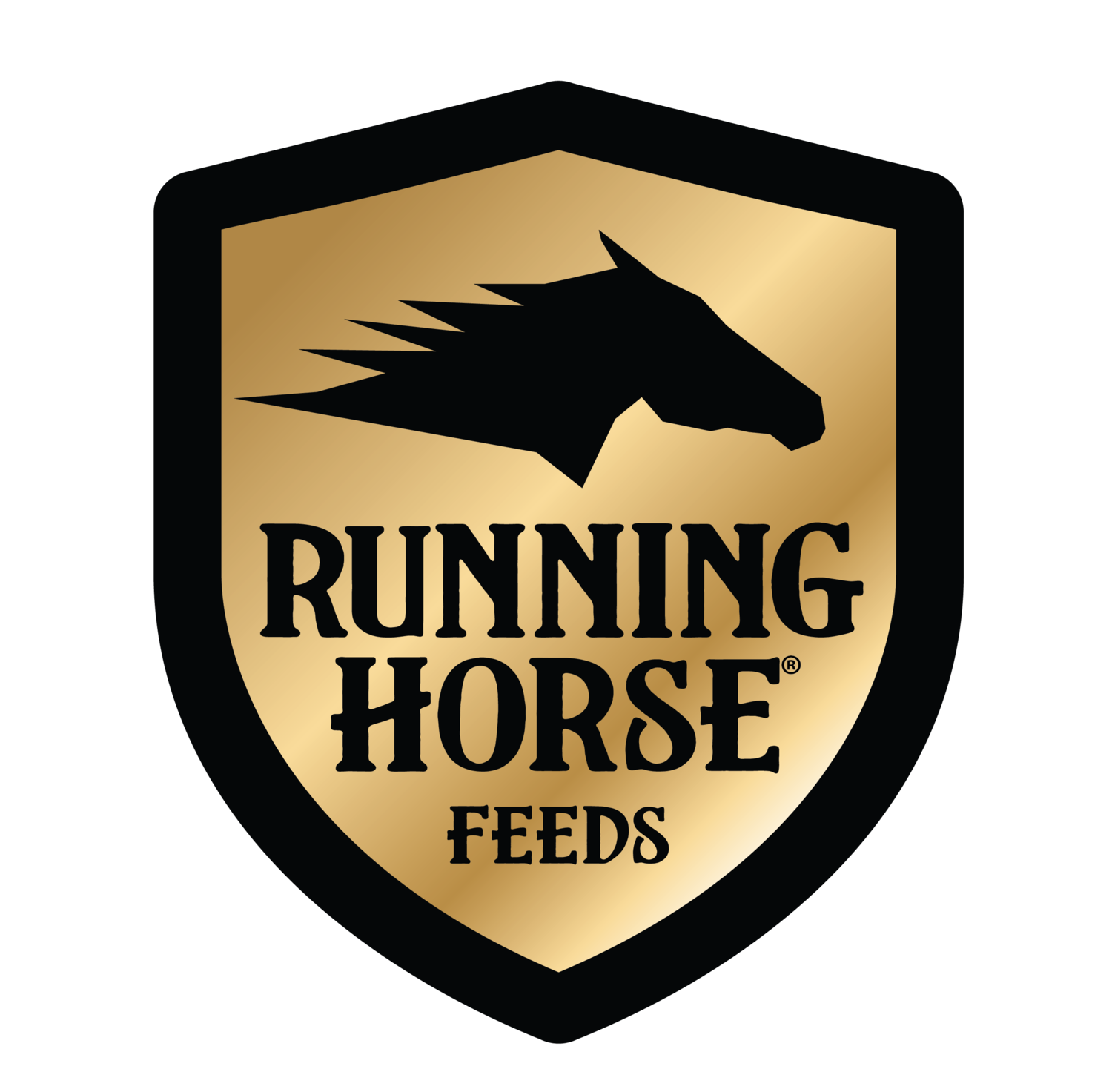
We Make Horse Feed with a Purpose.
Benefits
ADVANCED EXTRUSION PROCESS
The extrusion process will better break the bond between carbohydrates which will result in improved digestibility. Easier-to-digest carbohydrates result in less gas production in the gut.
CONSUMPTION CONTROL
RUNNING HORSE® is an extruded feed that is significantly less dense than pellet feed. If Running Horse is popcorn then pelleted feeds are peanuts. A big mouthful of each is not the same. Expanded is safer.
LOW CARBOHYDRATE LEVEL
Non-structural carbohydrate levels help to reduce the "sugar high."
COMPLETE FEEDING PROGRAM
Eliminates the need for additional supplements.
OAT LIKE APPEARANCE
Unique shape gives a better mouth feel and greater acceptance.
WEED SEED-FREE
Certified weed seed-free.
CONTROLLED ENERGY SOURCE
Refined vegetable oil and the slow burn carbohydrates of Barley.
FIXED FORMULA
A fixed formula makes RUNNING HORSE® safe for your horse wherever you buy it.
See why RUNNING HORSE® Feed is the future of horse feed.
How we make our products.
Carbohydrates are energy-dense nutrients that are commonly categorized as structural (fiber) or non-structural (simple sugars and starch). Structural carbohydrates provide the “structure” of plants and seed coats and are digested by microbes in the hindgut of horses to produce slow-release energy. Non-structural carbohydrates (NSC) are digested by enzymes in the stomach and small intestine and provide quick-release energy. Large intakes of NSC have been associated with colic, laminitis, tying-up, cushings, orthopedic diseases, hyperactivity, and insulin resistance in horses. Horse trainers, owners, and enthusiasts attempt to reduce digestive disorders by limiting the intake of NSC. Low levels of NSC (<25%) are found in grasses, hays, and low glycemic feeds (such as beet pulp and rice bran) while high levels of NSC (>60%) are common in grains and texturized feeds.
RUNNING HORSE® feeds were designed to have low concentrations of NSC. Recent laboratory reports showed that NSC levels of Running Horse Feeds were comparable to levels observed in grasses and low glycemic feeds.
The RUNNING HORSE® line of feed includes Mare & Foal, Cut & Slide, Trail Mix, and Senior. They were designed to have low concentrations of fermentable sugars including starch. Starch levels of these products are below 12% (depending on product and batch). Non-structural carbohydrates (starch plus monosaccharides and disaccharides) are less than 24% for all of the products. Compare this to a texturized feed (molasses plus grain) that commonly contain in excess of 60% NSC.
The ingredients in RUNNING HORSE® feeds include Beet Pulp, Rice Bran, and Wheat Midds/Bran. The glycemic index of these feedstuffs is very low and helps reduce problems associated with high intakes of NSC including insulin resistance, glucose intolerance, hyperactivity, and laminitis.
The RUNNING HORSE® feeds and treat line is 100% extruded. The extrusion process differs significantly from pelleting and offers several distinct advantages in feeding horses. During the extrusion, process feed is actually cooked under pressure at high temperatures for a short period of time. The mix is then forced through a die to determine the final shape and size. The heat from the friction and steam breaks down bonds to make the feed more water-soluble. This makes the feed more easily digested and makes certain nutrients more available to the horse.
The extrusion process denatures protein by breaking down the primary bond holding the chain of amino acids together. The heat of extrusion also denatures undesirable compounds such as urease and the trypsin inhibitor present in raw soybeans.
The utilization of carbohydrates (starches) is greatly improved by the extrusion process. As starch is extruded, it is gelatinized and when it leaves the extruder, it expands. Once the starch granule is gelatinized, it cannot revert to the original state and it is now water-soluble. The most important effect of cooking starches is to make them readily absorbed in the small intestine as glucose. This means fewer soluble carbohydrates are presented to the hindgut where bacterial fermentation might take place. This can have a significant impact on the incidence of gaseous colic caused by carbohydrate overload in the hindgut.
The effect of extrusion on fiber is related to bulk density. Because of the mechanical action, grinding, and attrition, the hollow structures of fibrous materials are crushed, thus changing their bulk density and making the fiber more easily accessible to microbes in the hindgut. The expansion of the extruded feed products causes horses to eat and chew slower which leads to increased salivation, improved digestion, and fewer digestive disturbances.








